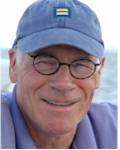Bible | Movies | Books | People | Hot Topics | Holidays | Humor | Gallery | Sanctuary | Sermons | Prayer | Quizzes | Communities | God | FAQ | Links
|
Sponsored Link |
Sacrament of the Senses: A Review of Stealing Beauty Can a film which is so obviously about sensuality also be about the spirit? Can a work of art which celebrates sex also speak of the soul? Can anything as secular as Stealing Beauty also be about the search for God? Using this movie as a case in point, the answer to these questions is obviously, �Yes!� Bernardo Bertolucci has taken a script by novelist, Susan Minot, and placed it on film with the brilliant assistance of cinematographer, Darius Khnodji. In so doing he has created a film which evokes memories of La Dolce Vita and Lolita as it tells the story of the 19 year old Lucy Harmon (played by Liv Tyler) who comes of age during a period of several weeks one summer in Italy�s Tuscan countryside. As the story unfolds Lucy emanates a sensuality that radiates throughout the little artist colony where she is staying, ostensibly to pose for an artist who was once a friend of her mother. In fact, Lucy has traveled to Italy on a quest, searching for the identity of her father and at the same time seeking her own first love. It�s in this quest that we find the connection between the flesh and the spirit. Familiar as most people in a western culture are with a view of God as loving Father, it should not strain credibility too far to suggest that Lucy�s struggle is, at bottom, for her own salvation. While the word God never enters the narrative, this film is very much a piece of that culture which is built around the notion that God is love. Of course this movie will not please those who believe that �family values� consist of following a set of rules. In this film almost every rule in the book is broken. And yet the beauty that is thus �stolen� in this work of art comes ultimately from a source none other than the Creator of heaven and earth.
Please take a moment to let us know you
were here!
If you want to talk with someone in person, please feel free to call 917-439-2305
The Rev. Charles P. Henderson is a Presbyterian minister and is the author of God and Science (John Knox Press, 1986). Charles also tracks the boundry between the virtual and the real at his blog: Next World Design, focusing on the mediation of art, science and spirituality in the metaverse. For more information about Charles Henderson. |
Sponsored Link
|

